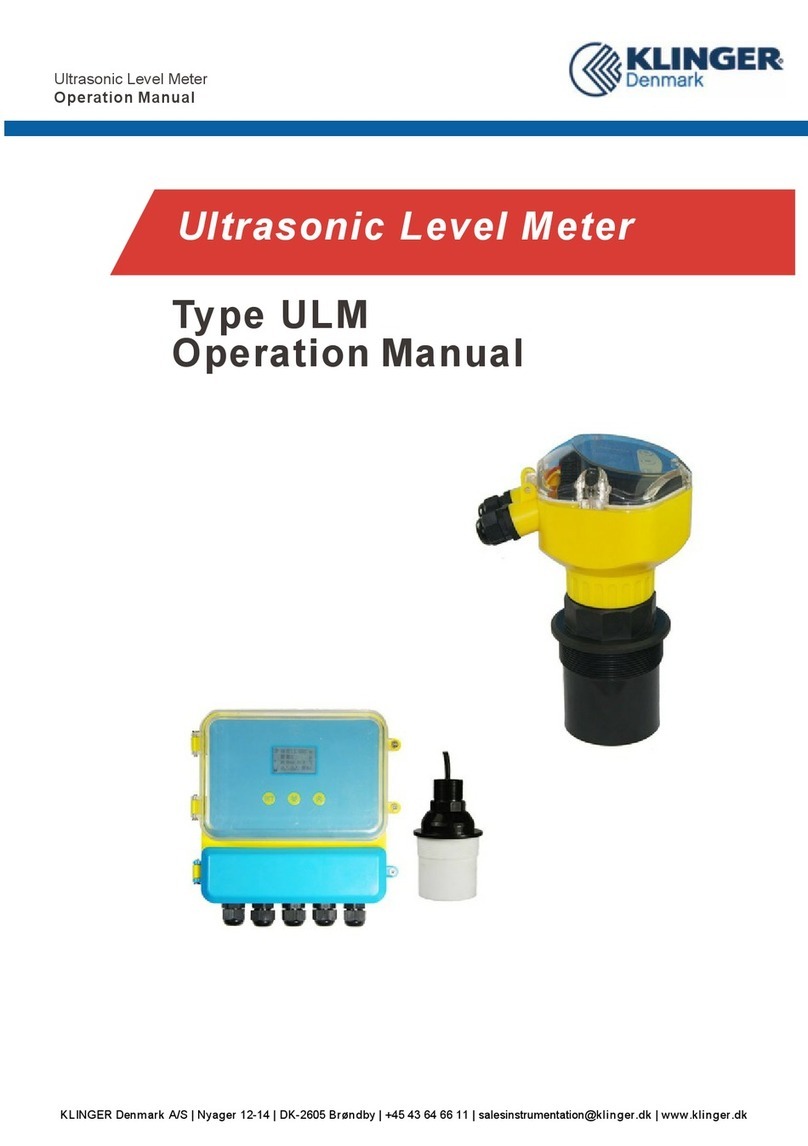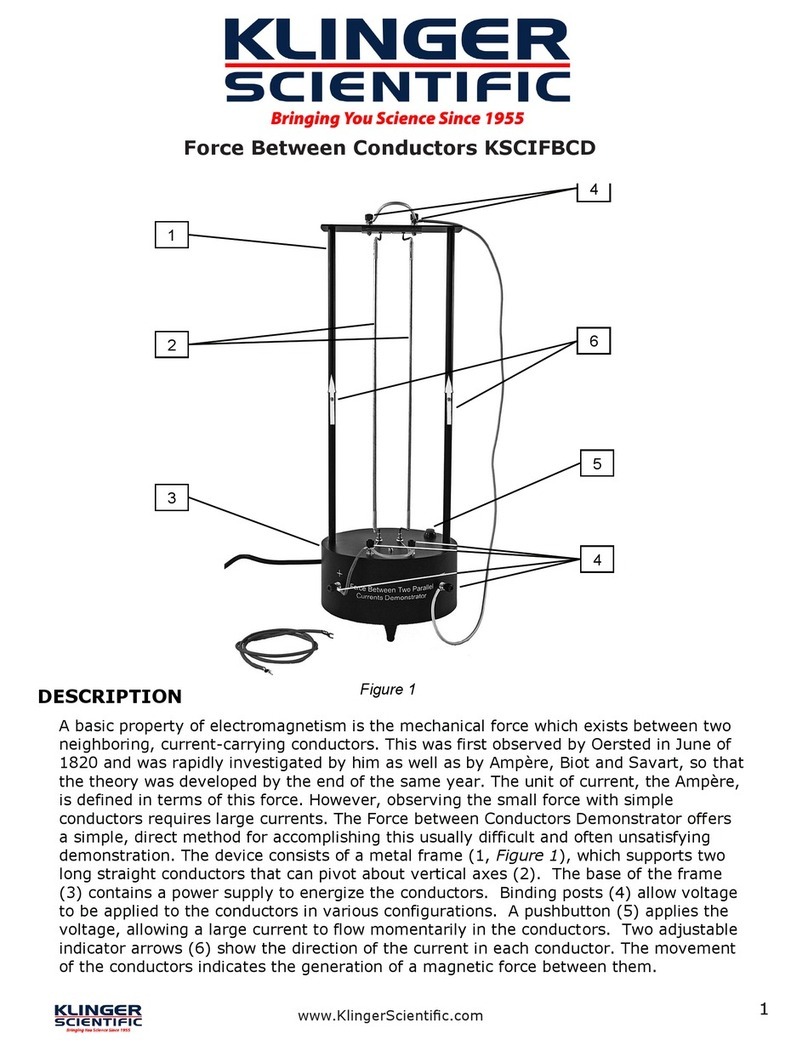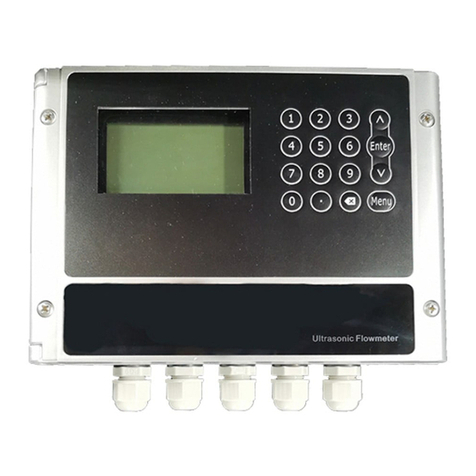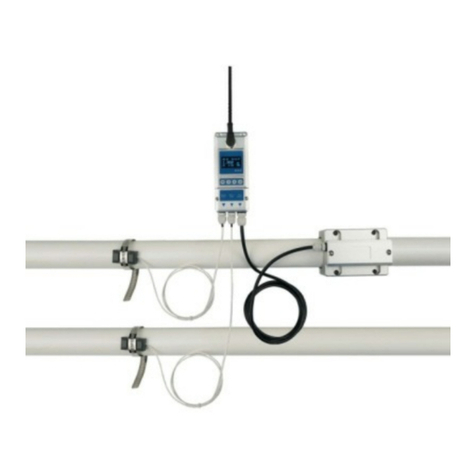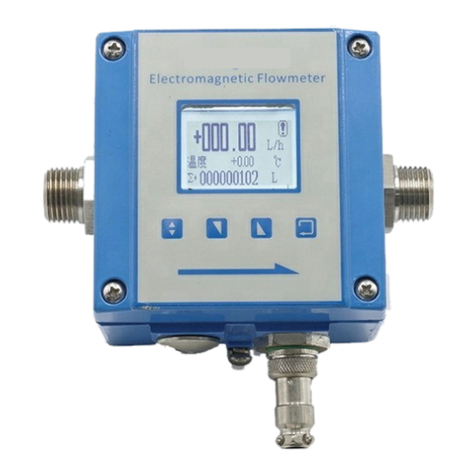
KLINGER Denm ark A/S | Nyager 12-14 | DK-2605 Brøndby | +45 43 64 66 11 | salesinstrumentation@kl inger.dk | www.klinger.dk
Side 4
Ultrasonic Flowmeter
Operation Manual
Content
1.Transmitter Installation and Connection ....................................................................................................................6
1.1 WIRE CONNECTING ................................................................................................................................................... 6
1.1.1Power Supply Option.......................................................................................................................................... 6
1.1.2 Transmitter Wiring.............................................................................................................................................6
1.2 POWERING ON........................................................................................................................................................... 6
1.3 KEYPAD FUNCTIONS ..................................................................................................................................................7
1.4 KEYPAD OPERATION .................................................................................................................................................. 7
1.5 FLOWMETER MENU DESCRIPTIONS ...........................................................................................................................8
2. The Quick Setup Instructions ...................................................................................................................................... 9
2.1DOUBLE FUNCTION KEYS MENU DESCRIPTION ............................................................................................................9
2.2 FOR EXAMPLE .......................................................................................................................................................... 13
2.3 MEASUREMENT SITE SELECTION ............................................................................................................................. 15
3.Transducer Installation ............................................................................................................................................... 16
3.1 INSTALLING THE TRANSDUCER ................................................................................................................................16
3.1.1 Transducer Mounting Methods........................................................................................................................ 17
3.1.2 V Method ......................................................................................................................................................... 17
3.1.3 Z Method ......................................................................................................................................................... 17
3.1.4 N Method (not commonly used)......................................................................................................................17
3.2TRANSDUCER INSTALLATION AND FIXING ................................................................................................................ 18
3.3 TRANSDUCER MOUNTING INSPECTION .................................................................................................................... 18
3.3.1 Signal Strength ................................................................................................................................................ 18
3.3.2 Signal Quality (Q value).................................................................................................................................. 18
3.3.3Total Time and Delta Time ............................................................................................................................... 18
3.3.4 Transit Time Ratio ........................................................................................................................................... 19
3.3.5Warnings........................................................................................................................................................... 19
4. Operating Instructions ............................................................................................................................................... 19
4.1 SYSTEM NORMAL IDENTIFICATION .......................................................................................................................... 19
4.2 LOW FLOW CUTOFF VALUE ..................................................................................................................................... 19
4.3 ZERO SETTINGS ....................................................................................................................................................... 19
4.4 SCALE FACTOR ........................................................................................................................................................ 20
4.5 4 ~ 20MA CURRENT LOOP OUTPUT.......................................................................................................................... 20
4.6 4-20MAANALOG OUTPUT CALIBRATION................................................................................................................. 20
4.7TF CARD OPERATION ............................................................................................................................................... 21
4.7.1Specifications ................................................................................................................................................... 21
4.7.2 Install or Remove the SD card while the meter is powered on........................................................................ 21
4.7.3 Reading the TF Data Offline ........................................................................................................................... 21
4.7.4 SD Card Storage Operation ............................................................................................................................. 22
4.8 ESN......................................................................................................................................................................... 23












